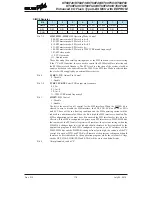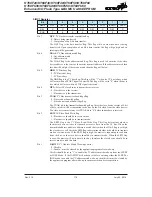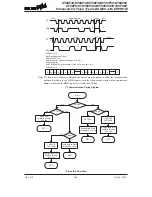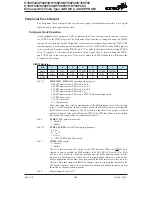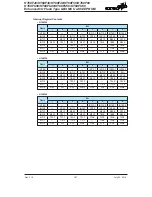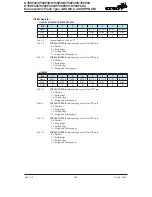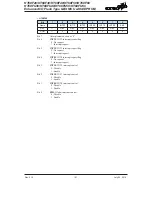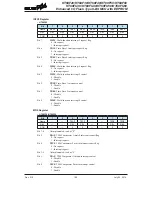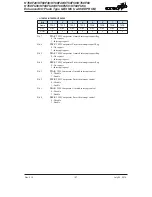
Rev. 2.10
186
���� 02� 201�
Rev. 2.10
187
���� 02� 201�
HT68F20/HT68F30/HT68F40/HT68F50/HT68F60
HT68FU30/HT68FU40/HT68FU50/HT68FU60
Enhanced I/O Flash Type 8-Bit MCU with EEPROM
HT68F20/HT68F30/HT68F40/HT68F50/HT68F60
HT68FU30/HT68FU40/HT68FU50/HT68FU60
Enhanced I/O Flash Type 8-Bit MCU with EEPROM
Interrupts
Interrupts are an important part of any microcontroller system. When an external event or an
internal function such as a Timer Module requires microcontroller attention, their corresponding
interrupt will enforce a temporary suspension of the main program allowing the microcontroller to
direct attention to their respective needs. The device contains several external interrupt and internal
interrupts functions. The external interrupts are generated by the action of the external INT0~INT3
and PINT pins, while the internal interrupts are generated by various internal functions such as the
TMs, Comparators, Time Base, LVD, EEPROM and SIM.
Interrupt Registers
Overall interrupt control, which basically means the setting of request flags when certain
microcontroller conditions occur and the setting of interrupt enable bits by the application program,
is controlled by a series of registers, located in the Special Purpose Data Memory, as shown in the
accompanying table. The number of registers depends upon the device chosen but fall into three
categories. The first is the INTC0~INTC3 registers which setup the primary interrupts, the second
is the MFI0~MFI3 registers which setup the Multi-function interrupts. Finally there is an INTEG
register to setup the external interrupt trigger edge type.
Each register contains a number of enable bits to enable or disable individual registers as well as
interrupt flags to indicate the presence of an interrupt request. The naming convention of these
follows a specific pattern. First is listed an abbreviated interrupt type, then the (optional) number of
that interrupt followed by either an "E" for enable/disable bit or "F" for request flag.
Function
Enable Bit
Request Flag
Notes
G�oba�
EMI
—
—
Comparator
CPnE
CPnF
n=0 or 1
INTn Pin
INTnE
INTnF
n=0~3
M��ti-f�nction
MFnE
MFnF
n=0~5
Time Base
TBnE
TBnF
n=0 or 1
SIM
SIME
SIMF
—
LVD
LVE
LVF
—
EEPROM
DEE
DEF
—
PINT Pin
XPE
XPF
—
TM
TnPE
TnPF
n=0~3
TnAE
TnAF
TnBE
TnBF
Interrupt Register Bit Naming Conventions







